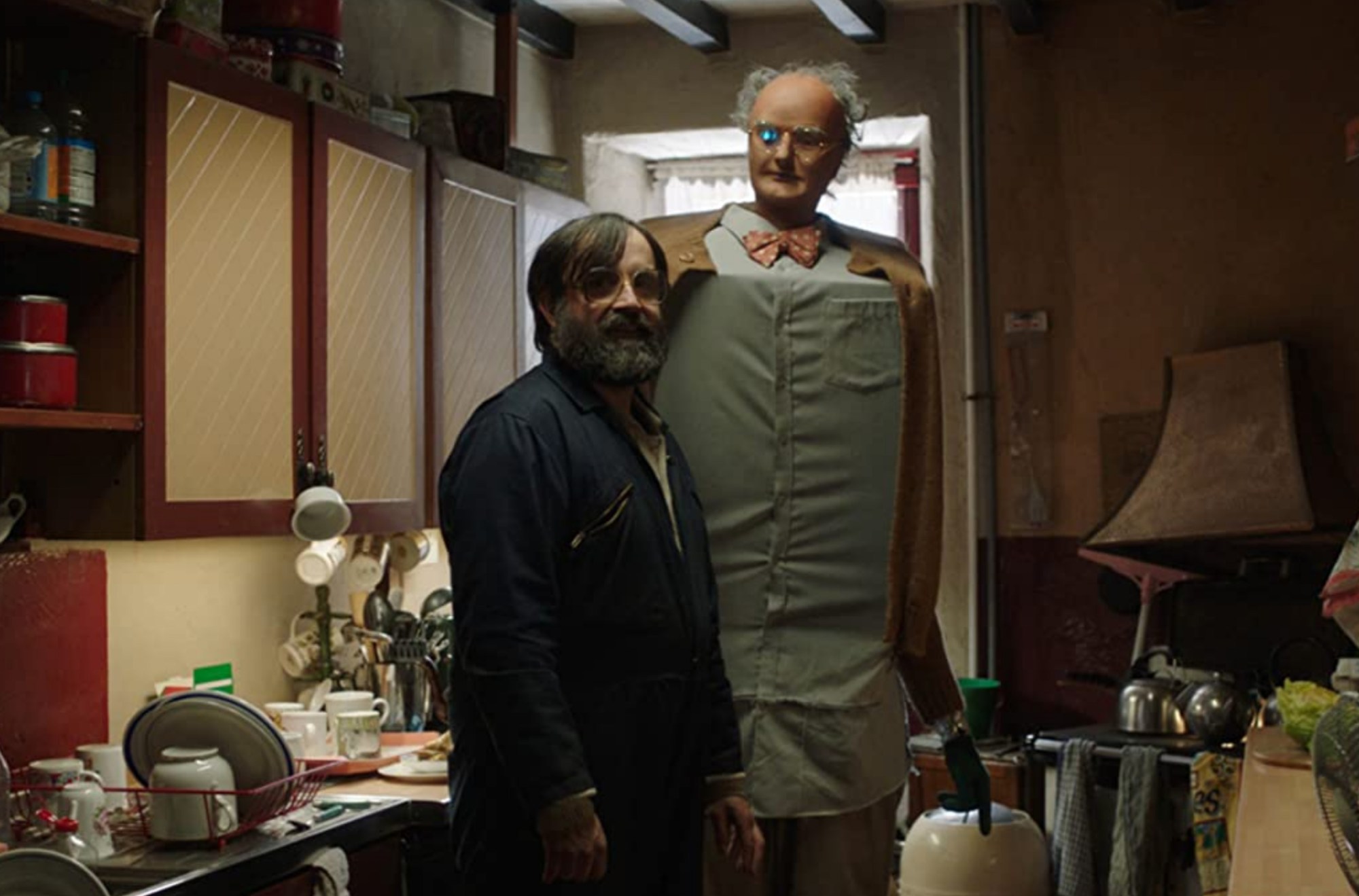
- Festivals
Sundance 2022: “Brian and Charles” Plugs into Trend of Robot Friends
A collaboration between director Jim Archer and multi-hyphenates David Earl and Chris Hayward, who co-wrote the movie and also stars in it, Brian and Charles recently enjoyed its world premiere at the Sundance Film Festival in the World Cinema Dramatic Competition section. A whimsical, amiable cinematic hangout that connects best with fans of Flight of the Conchords and What We Do in the Shadows, the movie unfolds in a mockumentary style chronicling the relationship peaks and valleys between a man and his robot creation, who achieves unlikely sentience but soon begins to chafe at the frustrations of life in their small Welsh town.
As with a number of movies at this year’s festival, Brian and Charles has roots that stretch back to a short film — and in this case actually even further. “I think one of the reasons we made the [feature] was we just had a nice time in an Airbnb in Wales five years ago, and we enjoyed it so much that we were like, ‘Oh, we could stay in Wales another four weeks, and we could have a film,’” said Archer with a laugh at the film’s Sundance Q&A presentation following its January 23, 2022 bow.
“I’d been doing [the character of] Brian on the stand-up circuit for about 65 years or something like that, and then I did a terrible Internet radio phone-in show, where members of the public would come on and try to converse with me as Brian,” shared Earl, who joined Archer for the Q&A alongside Hayward appearing in character, dressed up as Charles. “And then one night Rupert [Majendie], our producer, called in and used this voice simulation software, and that was the birth of Charles, the first time we sort of chatted to one another. And then Chris was listening and thought he wouldn’t mind trying to actually build Charles.”
Several live shows with the pair proved fun and fruitful, and the creative team set out to make their short film in 2017. That, too, proved successful. In fleshing out and constructing a feature-length version of Brian and Charles, though, some bits stayed, and others evolved. “The movie I kept going back to while writing this is a documentary, American Movie. That little friendship I love, just these two awkward guys sort of bumping along together,” said Earl. “And stuff like E.T.,” added Archer. “We were keen for this to be a family film, or at least something heartwarming, so we were very into the buddy element of it.”
There was no shortage of ideas. In fact, the group cycled through some radically different narratives than what eventually ended up on screens, including an 8-meter-tall version of Charles, which Brian rides around town. “There’s the version where he wasn’t even a robot, where he sort of came from space or something,” said Archer. “We also had an idea with the short where we cut to the end and see Brian just dragging a washing machine around or something like that, and the whole thing’s been in his head. But then we realized that the fact he builds him, and Charles is a [real] robot, plays into the fact that [Brian is] incredibly lonely. So, I thought it was quite important that we kept that. We circled around a lot for sure, and then came back to what was best about the short.”
The version of Brian and Charles they settled upon centers around Brian (Earl), a frequent target of town bully Eddie (Jamie Michie), and the lonely inventor of contraptions like an egg belt, for which no one is particularly clamoring. After the robot he constructs from various odds and ends comes to life, Brian names his friend Charles (Hayward). As the latter tires of being hidden from Eddie and others for his safety and takes on more of a tone of surly teenage insouciance, Brian must figure out how to best care for his creation.
Bringing Charles to life would mean striking a balance between using the simulated-voice software which gives the character a sort of stilted hilarity and having Hayward simply voice lines that could and would be tweaked a bit in post-production ADR sessions.
“The voice for Charles would kind of be done in two different ways — sometimes by Rupert on set with a laptop typing out lines, which as you can tell sometimes takes a while,” said Archer. “That kind of lended itself to the fun of Charles’s crap ‘robot-ness,’ if you will, where David would have to sit there waiting for a response. But sometimes it would be Chris in the suit improvising. I think doing a documentary-style, it’s important to keep it a bit loose. We stuck pretty close to the script, but I think every scene we’d try to do a looser version, so everything felt real.”